Pug
Pug is a charming and loving dog breed that will make you fall in love at first sight. Because they have a great sense of humor and they like to show off, Pugs are known as clowns in the dog world. Other names for this dog breed are Chinese pug and Dutch mastiff. This is an ideal house dog that must be close to their human.
Don’t think that because of their small size and their good temperament, you don’t have to train and socialize with this dog. Like any other dog breed, they must have proper socialization to become a well-mannered dog. Before you start searching for Pug breeders, explore this dog breed so you can be sure that this is the right dog for you.
These dogs are loyal, affectionate, and intelligent, but they can be willful, and because of that, training can be challenging. They are prone to some serious health problems, and thus, it is advised that you purchase a dog only from an official and responsible breeder and, with that, reduce the risk that the dog will be diagnosed with some hereditary diseases.
FUN FACT: A group of three or more Pugs is called a grumble.

Height:
10-13 in (25-33 cm)

Weight:
14-18 lb (6,3 - 8,1 kg)

Origin:
Great Britain

Life Expectancy:
10-12 years
Dog Breed Characteristics
These dogs have large and round heads with large and round eyes. Pugs have deep and distinct wrinkles on their face. They need a constant human companion and thrive on attention. Pugs love kids, so they are suitable for families. They are also great for apartments. They don't need a lot of space or a lot of exercise. Usually, they attract people with their personalities. Pugs are charming, cheerful, fun-loving dogs.
Coat and care
Pugs have a double coat that is short and smooth. But, although their coat is short, they shed a lot, especially in summer. Regular brushing is required. Typically they are fawn-colored but can come in apricot fawn, silver fawn, and black. Since these are house dogs, they don't wear down their nails as much as they should, so nail trimming is essential.
With regular brushing and bathing, you will keep your dog good-looking, and that will keep shedding under control. Their eyes need special attention. Because their eyes are protruding, they are vulnerable to injuries and irritation. Like all small dog breeds, they are prone to gum disease.
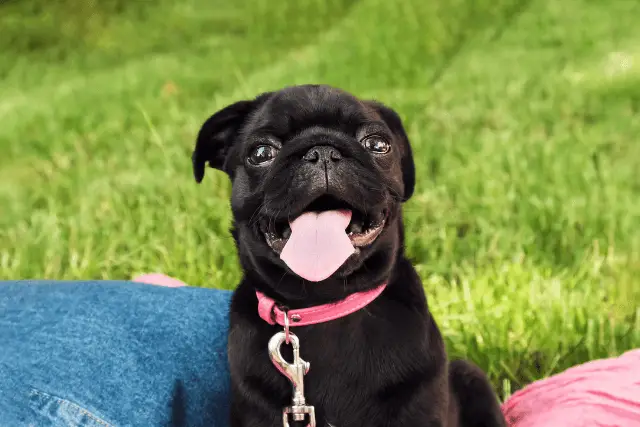
With regular brushing, you will secure the healthy gums of your dog with fresh breath.
FUN FACT: In Holland, the Pug became the official dog of the House of Orange. This dog had reportedly saved the life of William, Prince of Orange, by giving him a warning that the Spaniards were approaching in 1572.
Wrinkles
Pugs' facial wrinkles require special attention – folds on their face are ideal for infections, so they should be cleaned regularly. The wrinkles must be dried when they get wet and wiped out regularly. Their eyes are also in need of special care because they are vulnerable to injury and irritation. These dogs wheeze, snort, and snore, and they do it loudly.
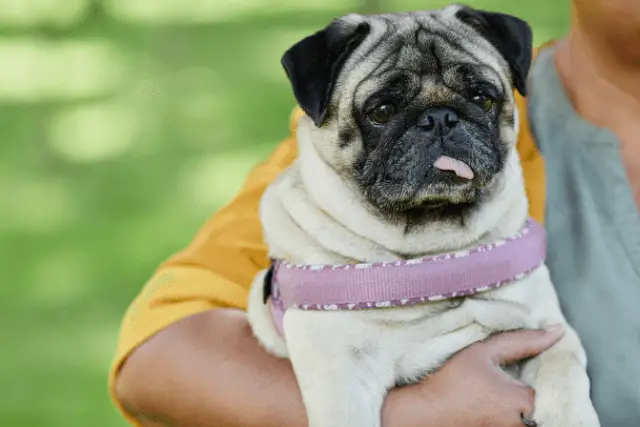
FUN FACT: Pugs are known to be rather lazy – on average, they sleep for about 14 hours a day.
Exercise
Although they are playful and rambunctious, they don’t require a great amount of daily exercise. They are a low-maintenance dog breed that is ideal for older owners. A few daily walks and moderate exercise will be enough to make this dog breed happy and satisfied. The rest of the day, he will gladly spend on the couch snuggling.
Pugs can be excellent in canine sports such as obedience, agility, and rally.
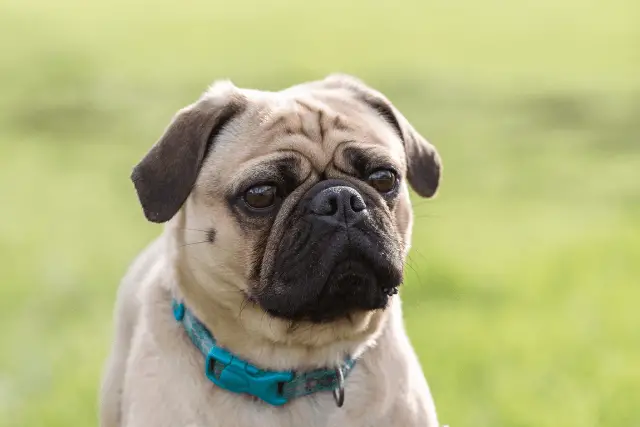
Obesity
Because they don’t require a lot of exercise and like to spend their days resting, this dog breed is prone to obesity. You will need to watch your dogs' calorie consumption. Treats are allowed, but you should be careful with them because too many can also cause obesity.
FUN FACT: The Pugs’ official motto is “Multum in Parvo” which means “a lot in a little”. Maybe Pugs are small Toy dogs, but they have a big and awesome personality.
Training
This is a calm and stable dog that was bred to be a companion. Most of all, they want to please their owners, and because of that, they are generally easy to train. As we already said, sometimes they can be willful, so training can be challenging.
Training Pug should be based on positive reinforcement because they don’t respond well to harsh training methods.
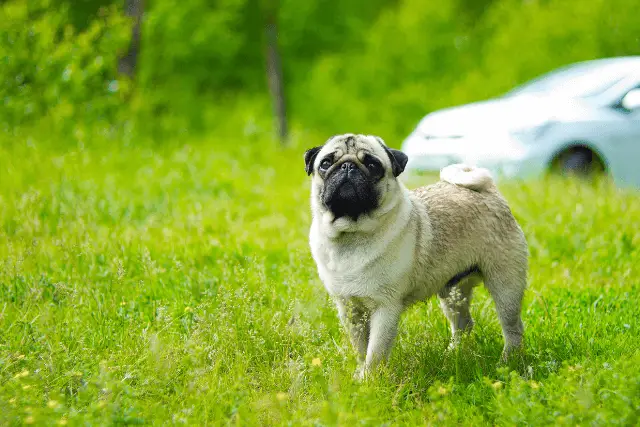
Socialization
Because they are small dog breeds, they can adapt well to apartment living. Like all dogs, they will also need early socialization if you want a well-behaved dog. With early socialization, you will ensure that your dog will get along with other dogs and animals.
These dogs love kids. Although small, this dog is not delicate like some other toy breeds, and because of that, it is a good choice for families with children. To be sure that your dog will develop into a well-mannered dog, expose him to many different sights, sounds, people, and dogs while he is young so he can get used to many different situations and he can learn how to react.
With other dogs and animals from the same house, they will get along excellently, especially if they are raised together.
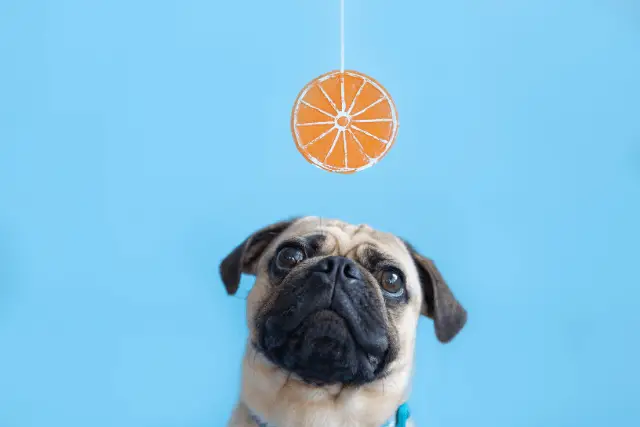
Health problems
Due to their flat-shaped face, Pugs don’t do well in extremely hot weather and humidity (with dogs with longer muzzles, the air cools down when it passes through the nose and before it enters the lungs). When it is too hot or too cold outside, you should keep your Pug indoors. Their life span is 10 to 12 years, sometimes even 15 years.
Pugs are prone to certain health conditions that current and future owners should know.
Some of these conditions are
- Cheyletiella Dermatitis or Walking Dandruff (a skin condition that is caused by a small mite – if you notice heavy dandruff on your Pug, contact your vet immediately),
- Pug Dog Encephalitis (PDE) is a fatal inflammatory brain disease unique to Pugs. PDE is not treatable because a diagnosis of PDE can only be made by testing the brain tissue of the dog after it dies;
- epilepsy,
- nerve degeneration,
- corneal ulcers (eye disease).
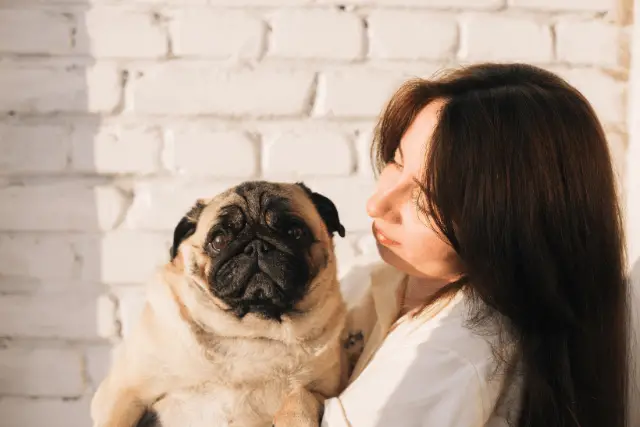
To be sure that your dog is healthy you can perform a few recommended health tests: hip and patella evaluation, ophthalmologist evaluation, and the Pug Dog Encephalitis DNA test.
Pug - eyes
Because of their large eyes, they are also prone to dry eye and other eye problems, including proptosis (an eyeball dislodged from the eye socket and the eyelid behind it), distichiasis (abnormal growth of eyelashes causing them to rub against the eye), progressive retinal atrophy (that can lead to blindness), etc.
Another condition that these dogs are prone to is called brachycephalic syndrome (the dog has pinched nostrils and an elongated soft palate causing the dog to have breathing problems). Pugs and other short-faced dogs can be born with a spinal condition called hemivertebrae, where the bones of the spine are deformed.
Another health problem is obesity. These dogs gain weight easily so monitor carefully the dogs’ food intake. This breed has an average probability of having health issues in its lifetime and is one of the more affordable breeds to insure.

FAQ
Pugs have an average lifespan of 10 - 12 years. However, individual dogs can live a lot longer than that.
The average price of a Pug puppy is $1.000 - $2.000, depending on the parent’s pedigrees and health tests.
Yes, Pugs shed. They are not the heaviest shedders in the canine kingdom, but they still shed. You can notice their shedding during the shedding season (spring and fall).
No, Pugs are not hypoallergenic. They shed, and the loose hair can cause allergies to those of us allergic to dog hair.
Pugs are considered a small dog breed. Their average size is 10 - 13 inches and 14 - 18 pounds.
Pugs are not the smartest dog breed in the world. They can be difficult to train and they score 2 out of 5 stars on our intelligence test.
No, well-bred, socialized Pugs should never be aggressive. They should be the perfect companion breed, and that includes getting along with other animals and humans.
The main goal of Pug breeding is companionship. They were bred for several hundred years, and throughout those times, they were always bred for companionship.
Pugs are considered good dogs. However, a dog’s behavior is directly related to their training and socialization. It is up to the owner to teach the dog manners.
Pugs can swim, but they’re not very good at it. They have short snouts, so breeding while swimming is a problem for them.
No, Pugs don’t bark a lot. In fact, if they start barking a lot, that would be considered a behavioral problem the owner should address.
Unfortunately, some Pugs have breathing issues. They are a brachycephalic dog breed, which means they were bred to have a short snout that affects their airways. It is crucial to get a Pug from a breeder that health tests their breeding dogs.
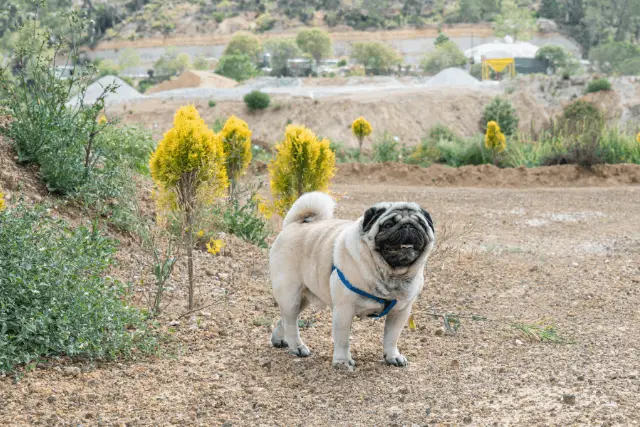
Pug breeders
Pugs are great companion dogs, and certainly, you will not make a mistake if you choose them for your pet. Although they are prone to all conditions mentioned above, it doesn’t mean your dog will develop any of them. When buying a puppy, take your time and find a responsible Pug breeder who will show you all health clearances for both your puppy’s parents.
Pureblodded Pug will cost you a lot of money, but when you consider that the risk that your future dog will develop any serious health problems is low, it will be worth it. If you don’t have one or you don’t want to spend too much money, we advise you to search for Pugs in animal shelters rather than buying a dog from an irresponsible breeder.
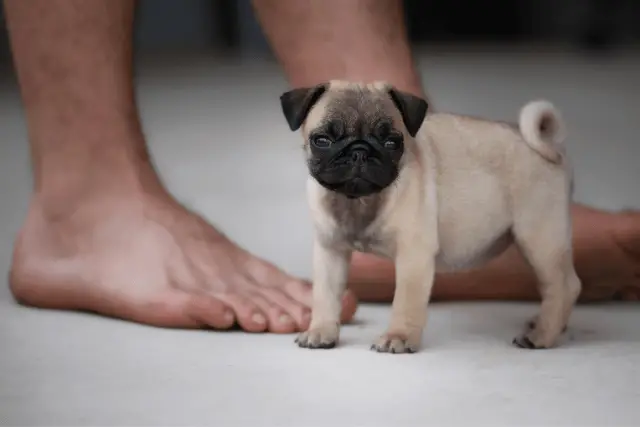
Either way, you will have to take care of this dog. Because they thrive on human contact, you will have to spend most of the day with your dog for him to be happy. These dogs are very intelligent, and they can learn almost everything.
With the right training and socialization from puppyhood, you can be sure that your dog will develop into a well-rounded dog who will get along well with everybody. Make sure to know all the health problems that your dog can suffer from, so you can protect him on time. If you want a dog who isn't physically active, and who will follow you everywhere you go, Pug is for sure the right choice for you.
World Dog Finder team

Updated at31.08.2023.
Breed History
The Pug is a small dog breed known for its wrinkly, short-muzzled face and curled tail. This dog originated in China and was bred by the royal family. They lived in luxury apartments and in some cases, they were guarded by soldiers.
This is one of the three dogs that were bred by the Chinese among Shih Tzu and Pekingnese. They were brought to Europe in the later 1500s and early 1600s and soon became very popular. These dogs first came to Europe by Dutch traders and soon became favorite dogs of royal households throughout Europe.
Because they spread quickly across Europe, many countries had different names for this dog breed: in Spain, it was Dogullo, in France Carlin, in Germany, Mops, and in Italy, Caganlino. The first Pugs were exhibited in 1861 in England.
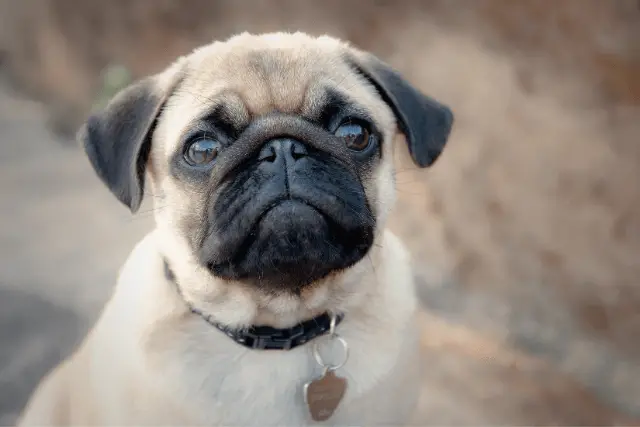
These dogs were very popular during the Victorian era, and they were featured in many postcards, paintings, and figurines. After the Civil War, these dogs came to the US. They were very popular at the beginning, but at the end of the century, these dogs became less wanted. Because of a few breeders who kept on breeding these dogs, after a few years, Pugs regained their popularity.
FUN FACT: Before marrying Napoleon Bonaparte, Josephine Bonaparte had a Pug named Fortune. She was confined at Les Carmen prison, and her Fortune was the only visitor she was allowed to have, and she used that to conceal messages in his collar to take to her family. Fortune is also famous for biting Napoleon on the couple’s wedding night after Josephine refused to kick the dog out of bed.
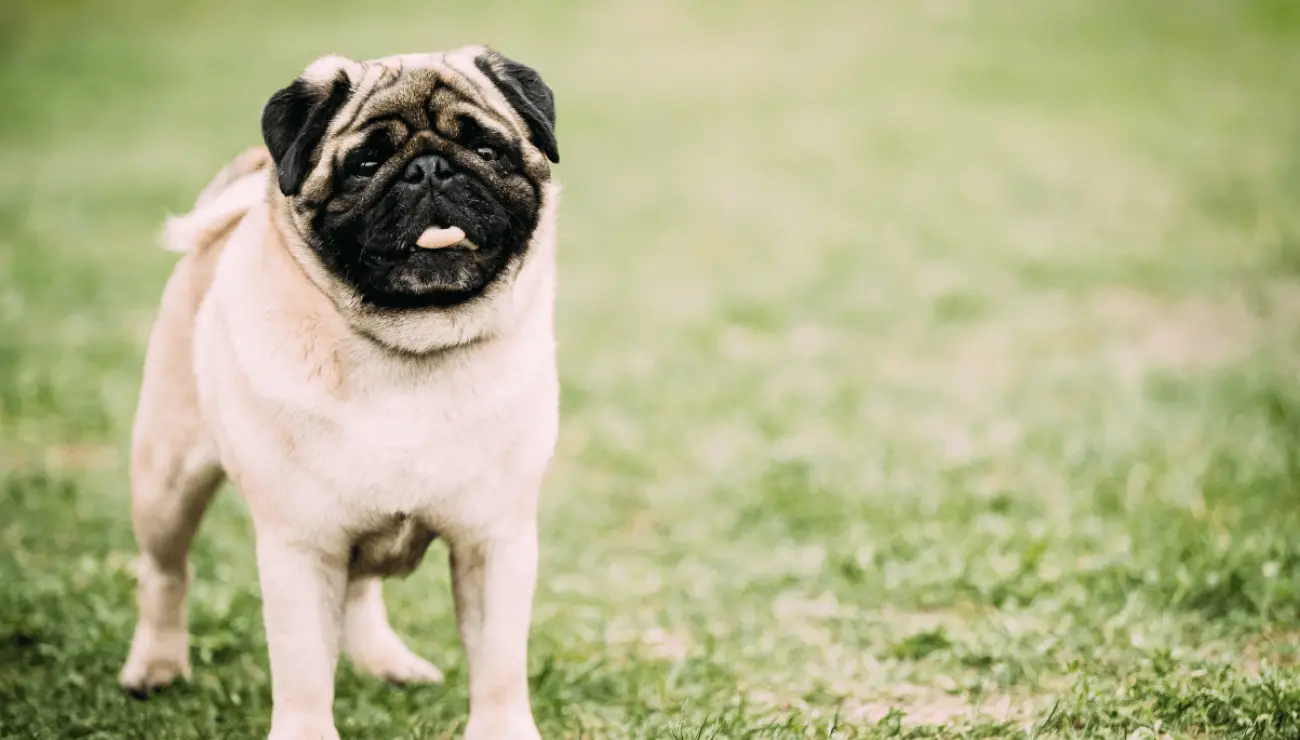
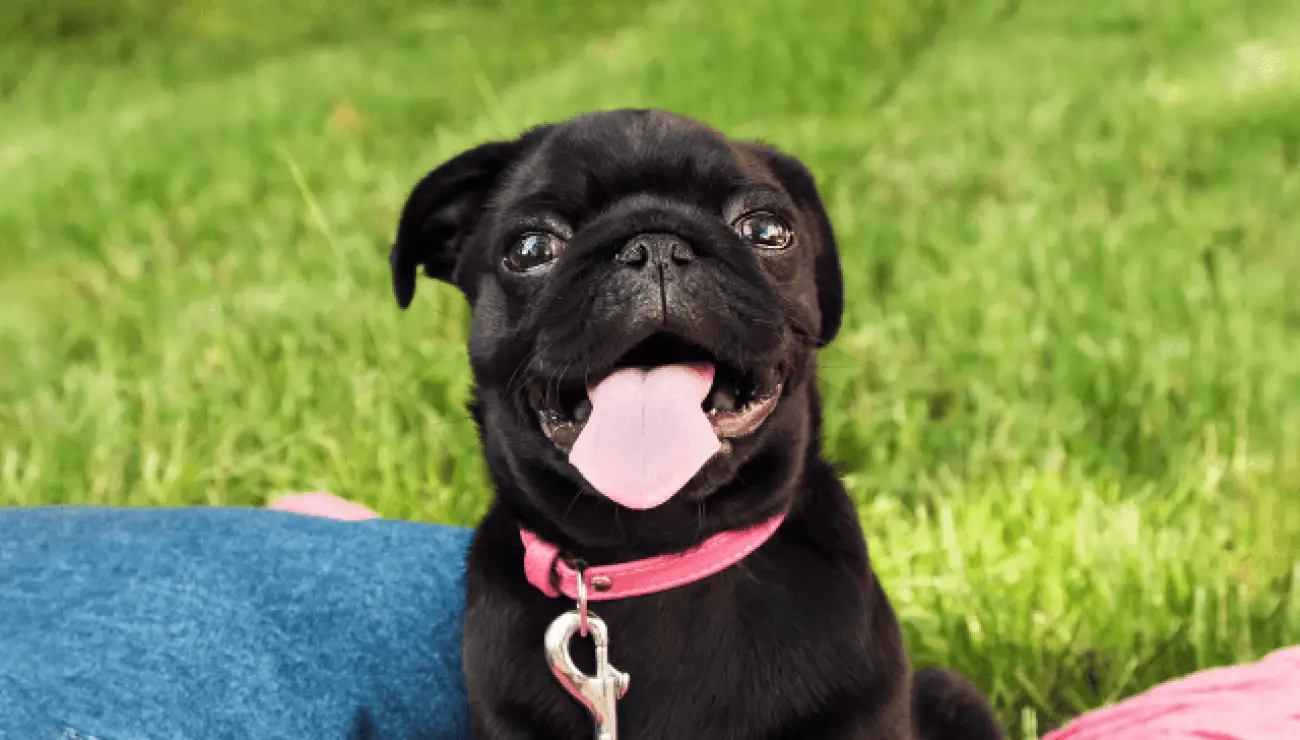
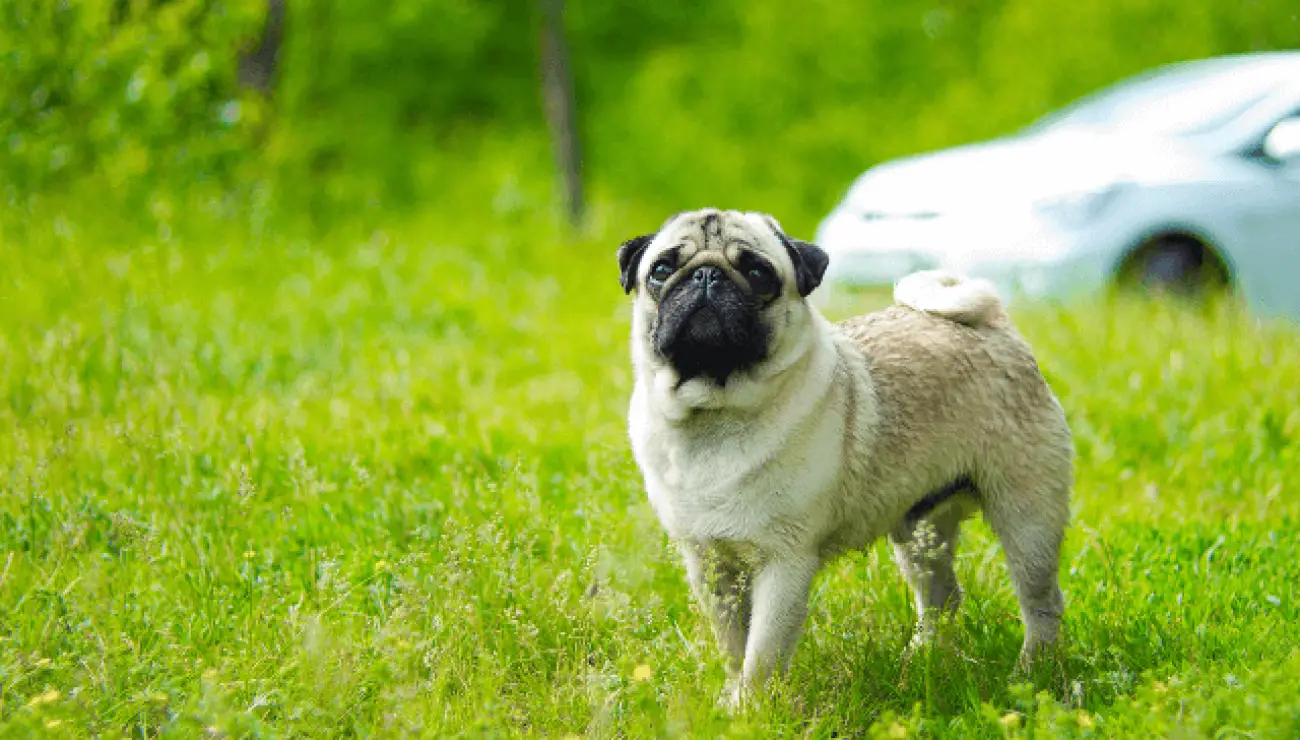
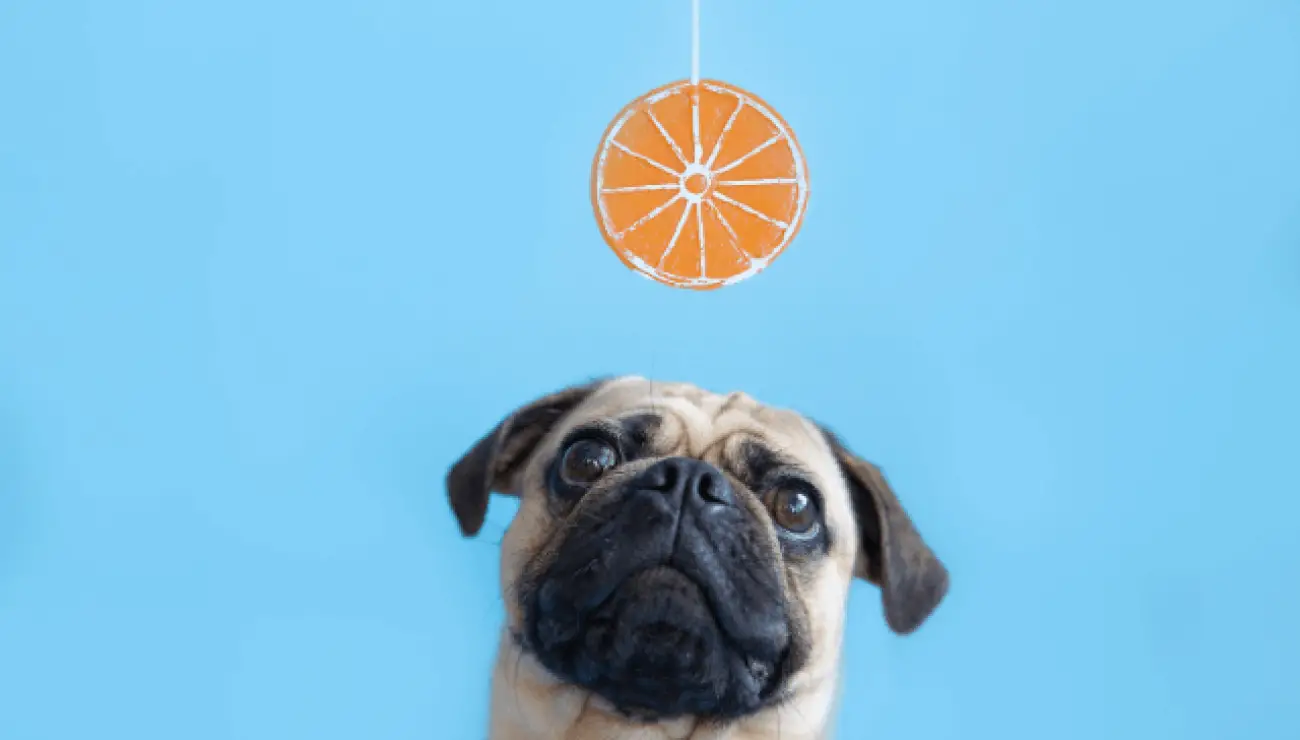
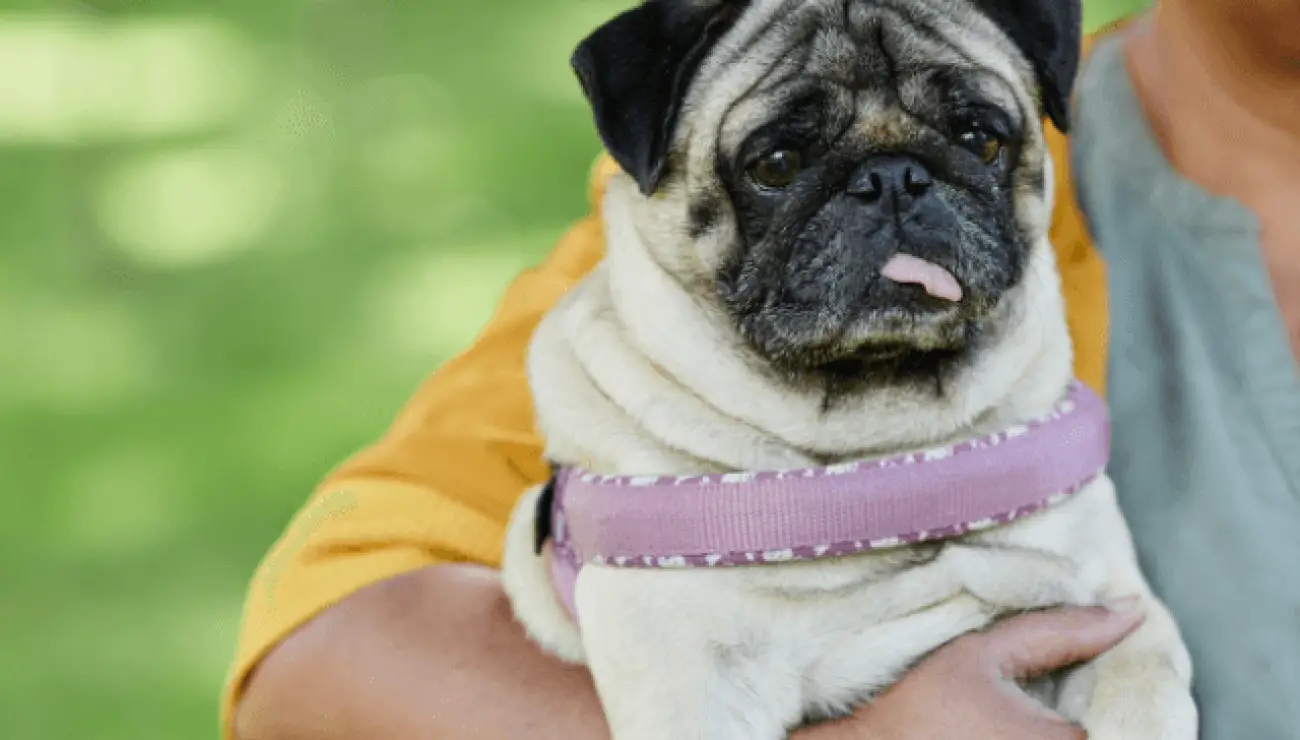
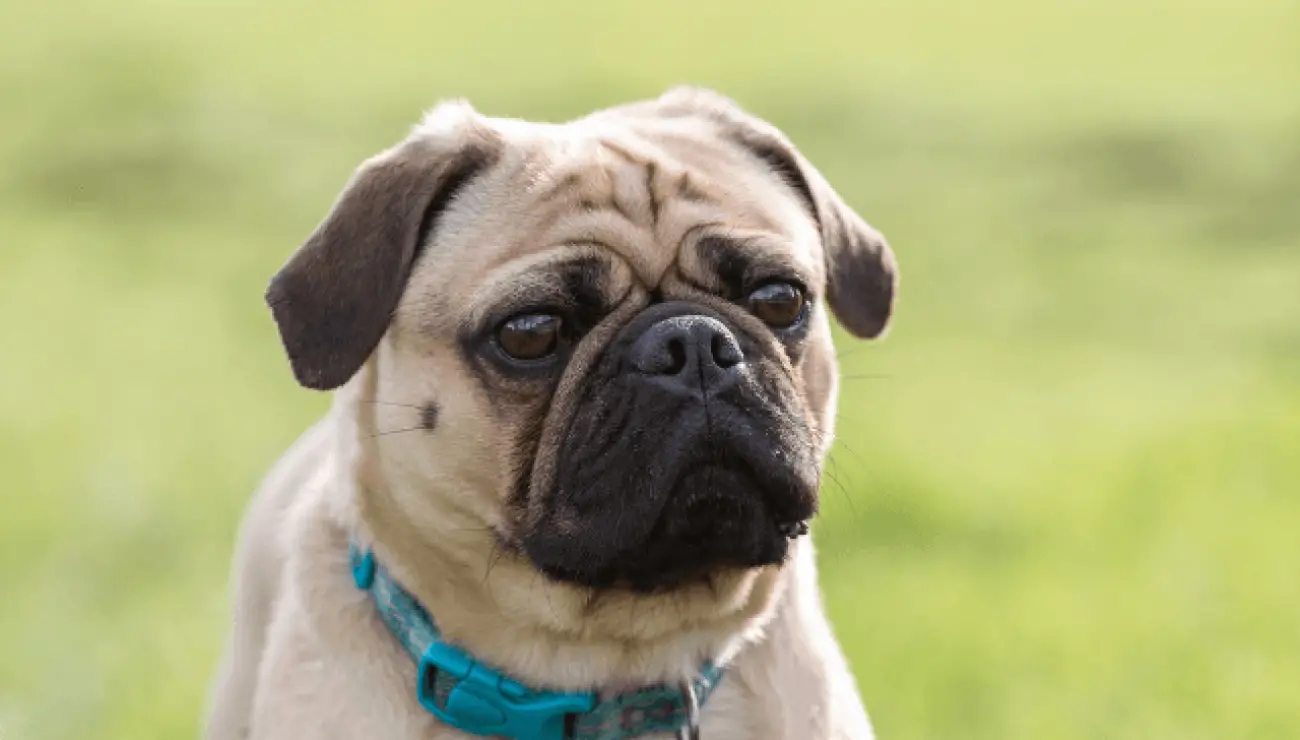
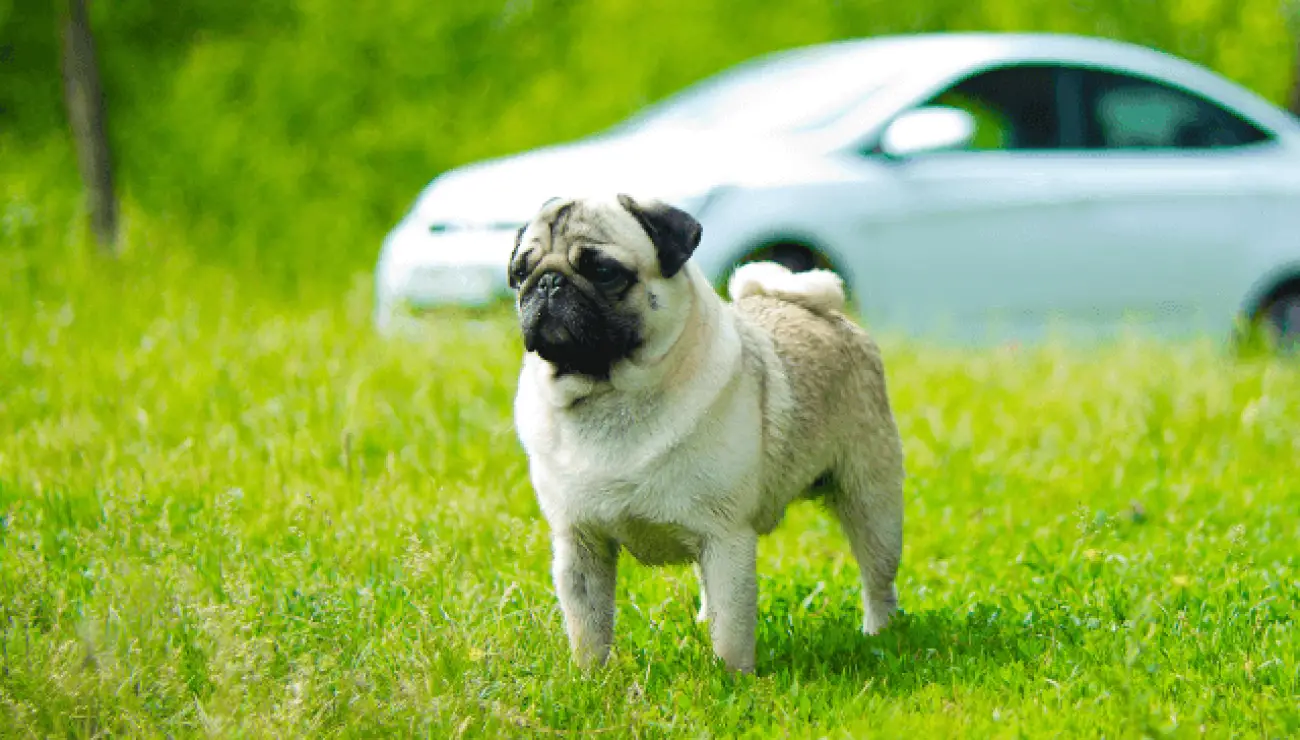


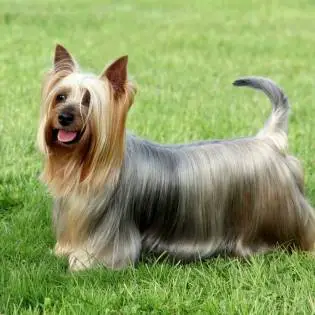
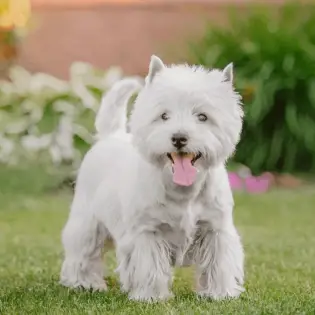


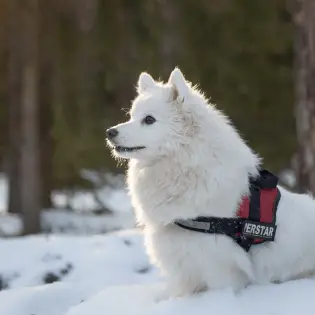

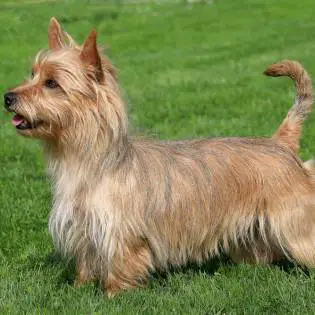
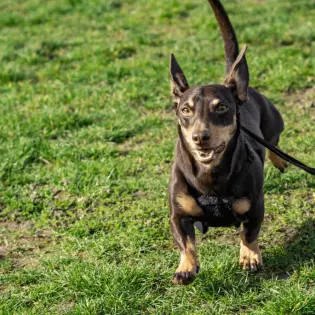

Share